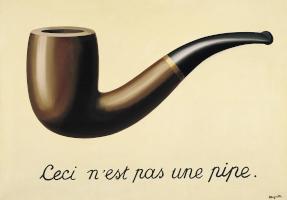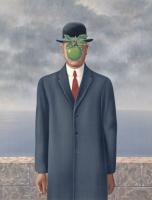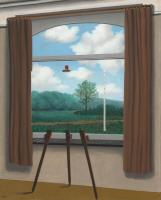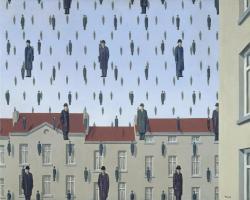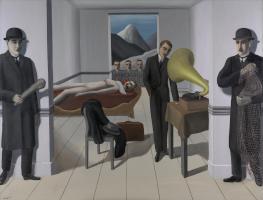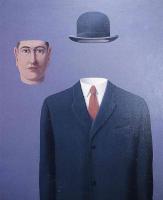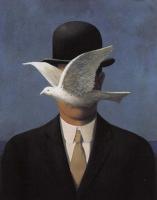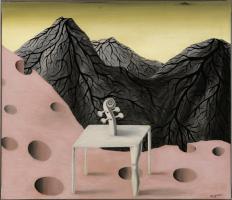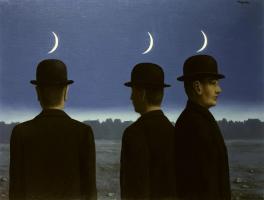René Magritte
René Magritte was the son of a Belgian businessman, and the eldest of three brothers. Most of his life was spent in Brussels, where he studied for several years at the Academie des Beaux-Arts, and for a while supported himself and his wife Georgette by designing wallpaper and commercial catalogues. In the 1920s he began to paint full time, and during a few tremendously productive periods he produced a painting a day.
He spent five years in Paris from 1927-32, and joined a group of painters who came to be known as the Surrealists. The movement developed from Dada, and its object was to explore the sub-conscious mind, and provoke an emotional and instinctive reaction to the world that was free from preconceptions. With the dream-like clarity and enormous inventiveness typical of the movement, Magritte combines ordinary everyday objects in an incongruous and startling way that is often funny and always surprising. He worked in a bland, deadpan manner, the paint smooth and dry-looking, the colours usually dull browns, blues and greys, which makes the strange mixtures of unrelated objects seem normal and convincing, and the effect therefore even more disconcerting.
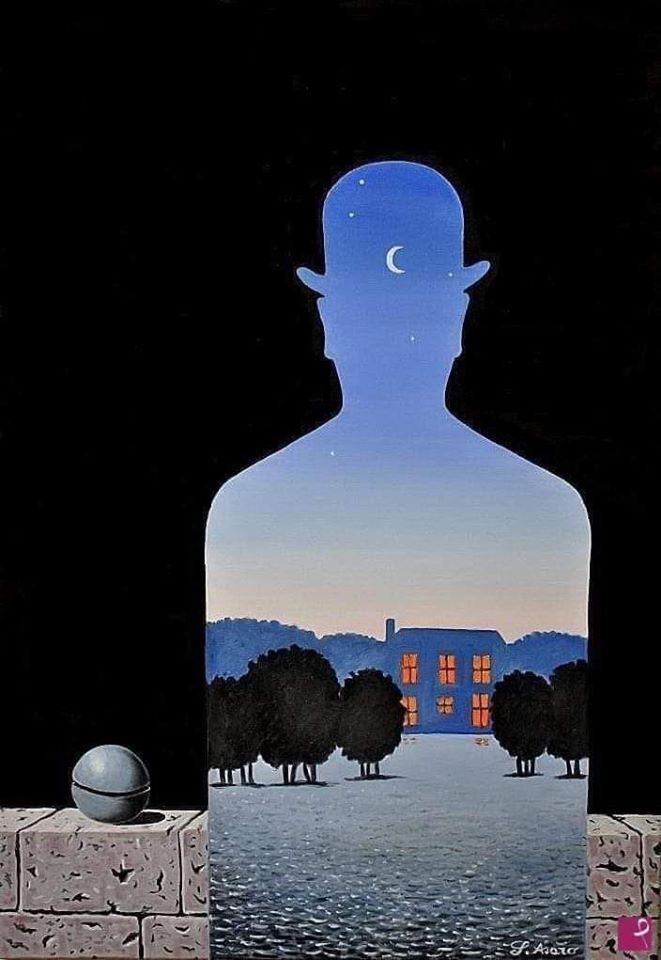 Magritte was always conscious about things that have a flip side even more
curious than their facade. In order to render the dark side visible, several of
Magritte’s recurring motifs are rendered here: Bowler hatted Mr. Average, the
melodious cowbell with associated cheese, and the evocative house at twilight.
Being fooled allows us to “shift our gaze”, as the philosopher Lacan wrote, to
eventually see things for what they really are by seeing what they really
aren’t.
Magritte was always conscious about things that have a flip side even more
curious than their facade. In order to render the dark side visible, several of
Magritte’s recurring motifs are rendered here: Bowler hatted Mr. Average, the
melodious cowbell with associated cheese, and the evocative house at twilight.
Being fooled allows us to “shift our gaze”, as the philosopher Lacan wrote, to
eventually see things for what they really are by seeing what they really
aren’t.
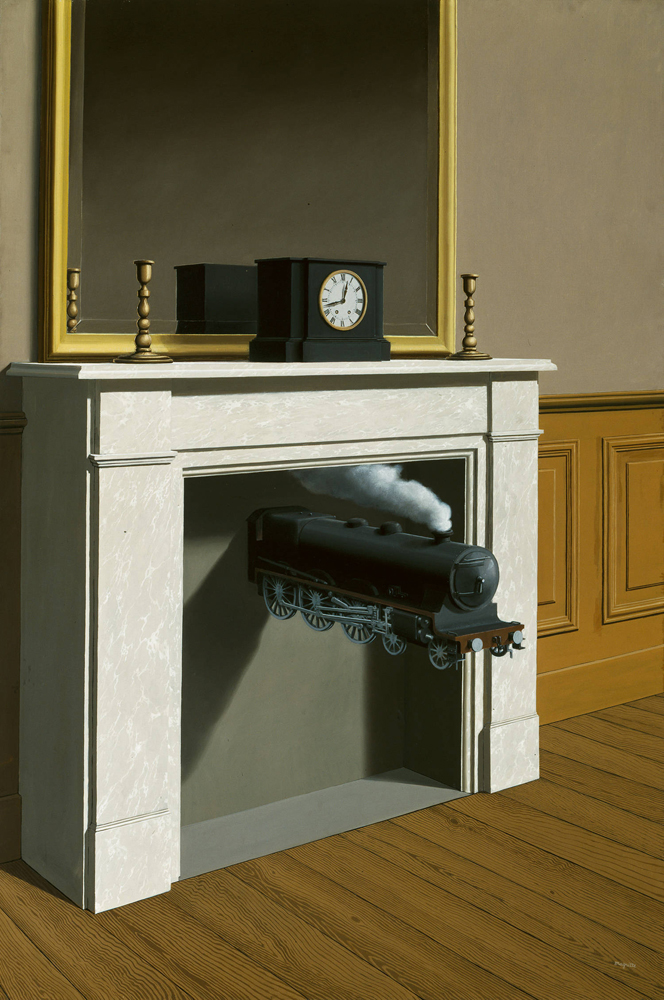 Most of Magritte’s work was the result of a long period of reflection, but Time
Transfixed appeared to him spontaneously, like a sudden vision. It shows a
mantelpiece, as anonymous and simple as most of the elements in his paintings,
with empty candlesticks and a clock reflected in a large mirror. From the empty
fireplace a locomotive engine rushes into the room, smoke and steam pouring up
the chimney from its funnel.
Most of Magritte’s work was the result of a long period of reflection, but Time
Transfixed appeared to him spontaneously, like a sudden vision. It shows a
mantelpiece, as anonymous and simple as most of the elements in his paintings,
with empty candlesticks and a clock reflected in a large mirror. From the empty
fireplace a locomotive engine rushes into the room, smoke and steam pouring up
the chimney from its funnel.
A train is associated in our minds with motion, and a clock is of course the emblem of time, but they are used here in a sort of double bluff : as a reminder of life rushing on and as an implication, because a painting can only capture a split second, of time and movement transfixed. The painting has a logic of its own, and a distorted connection with reality, which makes it seem as if the impossible could easily happen.
An unnerving tension is set up when one is faced with something unexpected, and Magritte, by creating an Alice in Wonderland world of his own inventing, full of illusions and surprises, jars us out of our preconceptions about the world we take for granted.

